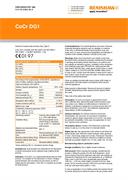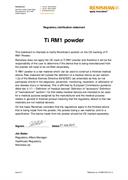Bu sayfa şu anda sizin dilinizde mevcut değildir. Google'ın Çeviri sistemini kullanarak
otomatikleştirilmiş çeviriye
ulaşabilirsiniz. Bu hizmeti sağlamaktan sorumlu değiliz ve çeviri sonuçları tarafımızdan kontrol edilmemiştir.
Eğer daha fazla yardıma ihtiyaç duyarsanız lütfen
bizim ile temasa geçiniz.
Additive manufacturing for healthcare
Additive manufacturing, also known as 3D printing, is an exciting technology whose benefits are being readily embraced, with real-life medical applications being developed daily.
Metal 3D printing systems for healthcare
Advanced metal additive manufacturing systems can produce products for your customers needs with increased productivity and repeatability.
AM removes traditional constraints
Additive manufacturing (AM) removes many of the constraints seen in more traditional manufacturing methods such as milling, casting, forging or fabrication. This opens up new possibilities for complex geometries and mass customisation of parts, at commercially viable costs, that were previously unfeasible. This enables new features to be built into medical devices that can benefit patient care in orthopaedics, implantology and dentistry.
Benefits of AM for healthcare applications
Compared to traditional manufacturing methods such as milling, casting, forging or fabrication, AM provides new manufacturing benefits.
- Greater design freedom – AM removes many design for manufacture (DfM) constraints, allowing new features to be designed that benefit both patients and surgeons
- Mass personalisation – AM excels at producing customised parts, allowing multiple, custom designs to be produced in one build (batch). This is also known as mass customisation
- Part consolidation – a benefit to medical device manufacturers, helping to reduce production costs. A benefit to surgeons as it can help reduce the number of in-theatre parts and human error
- Flexible manufacturing – multiple sizes or designs can be produced in one build, allowing build layouts to be tuned to meet inventory needs
- Mechanical matching – implants can be designed to better match the mechanical features of the body using lattices and novel structures with the aim of reducing stress-shielding, aiding fixation and bone ingrowth
All brand names and product names used on this website are trade names, service marks, trade marks or registered trade marks of their respective owners.
All products may not be available in all territories, contact your sales representative for further information.



